Battle for Karabakh: 30th anniversary of longest-running war in former USSR
Exactly 30 years ago in August 1992, deputies of the Supreme Council of the unrecognized Nagorno Karabakh Republic (NKR) imposed martial law on the region and announced a general mobilization. The conflict between Armenia and Azerbaijan escalated to a new level: with the collapse of the USSR, the allied authorities no longer controlled the warring parties, which were able to use the weapons left by the Soviet army. The first Karabakh war, which lasted until May 1994, claimed the lives of more than 30,000 people and made more than a million people refugees. This conflict became a defining factor in post-Soviet history and an integral part of the modern identity of Azerbaijanis and Armenians.
Lenta.Ru presented the history of the first bloody war in Nagorno-Karabakh in the photographs of Alexander Nemenov.
Harbinger of the storm
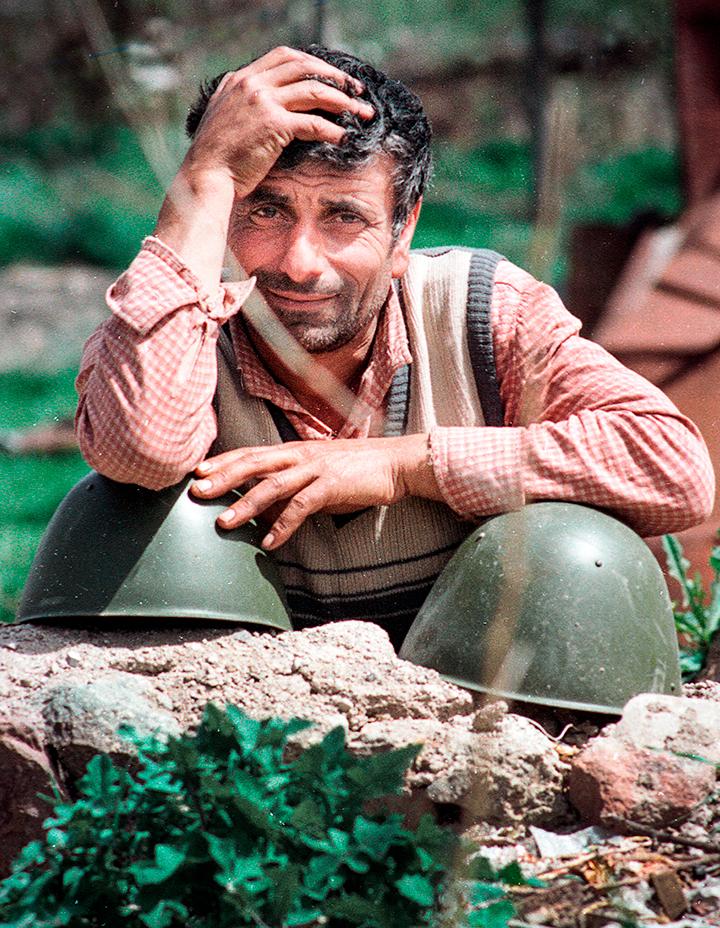
Armenian soldier in the village of Hin Tagher (Azerbaijani name: Kohne Taghlar)
The modern history of the conflict starts with Gorbachev's perestroika in the 1980s and the rise of national movements on the territory of the Soviet Union. As part of the Azerbaijani SSR, Nagorno-Karabakh had the status of an autonomous region but was predominantly populated by Armenians.
Back in the late 1980s, Armenians asked the Soviet leadership to transfer them under the jurisdiction of the Armenian SSR. The movement for the unification of Karabakh with Armenia caused a surge of emotions in the Azerbaijani SSR. The clashes between the representatives of the communities soon resulted in the exodus of the Azerbaijani population from the Armenian SSR and Nagorno-Karabakh and pogroms in Azerbaijani cities, including Baku. The Soviet leadership tried to solve the issue by force, but this only led to the growing popularity of national identity ideas in both republics.
In December 1991, a referendum was held in Nagorno-Karabakh, where the majority voted for independence from the Azerbaijani SSR, followed by an armed conflict.
Disintegration processes
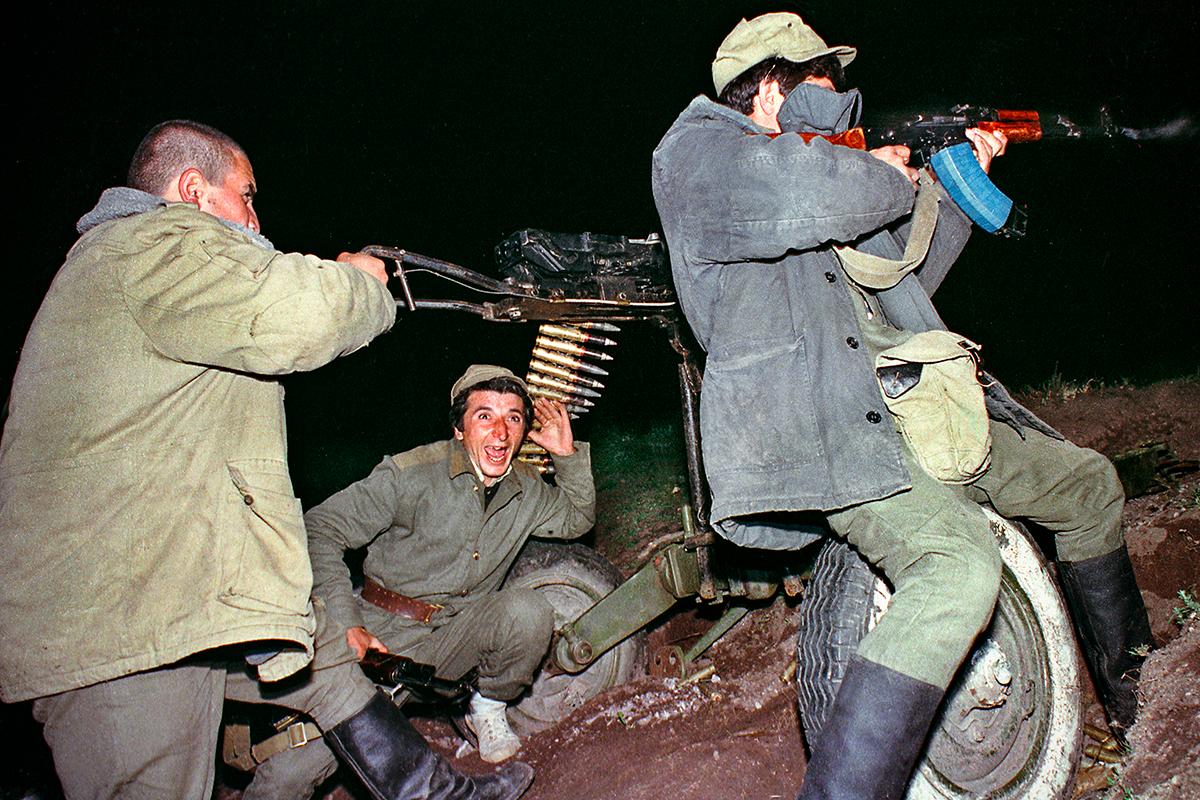
Azerbaijani soldiers firing a machine gun on the front line near the town of Aghdam, May 1992
In 1991, with the beginning of the collapse of the Soviet Union, the struggle for Nagorno-Karabakh entered a new phase. First, the Republic of Azerbaijan proclaimed its independence on August 30, 1991, and then on September 2, the unrecognized Nagorno-Karabakh Republic proclaimed its independence. Baku did not recognize Stepanakert's decision. As for Yerevan, the declaration of independence was adopted on August 23, 1990, and on September 23, 1991, the results of the referendum on withdrawal from the Soviet Union were officially announced there.
The Kremlin still tried to take control of the situation in Nagorno-Karabakh, and for a while, it succeeded: the Soviet Army and the militia of the Azerbaijani SSR conducted joint operations against the Armenian detachments. But by the end of 1991, the USSR had collapsed, and the Soviet army simply disappeared. On December 27, the Internal Troops of the Russian Interior Ministry completely left the region, and the situation in the region became uncontrollable.
The trial of strength
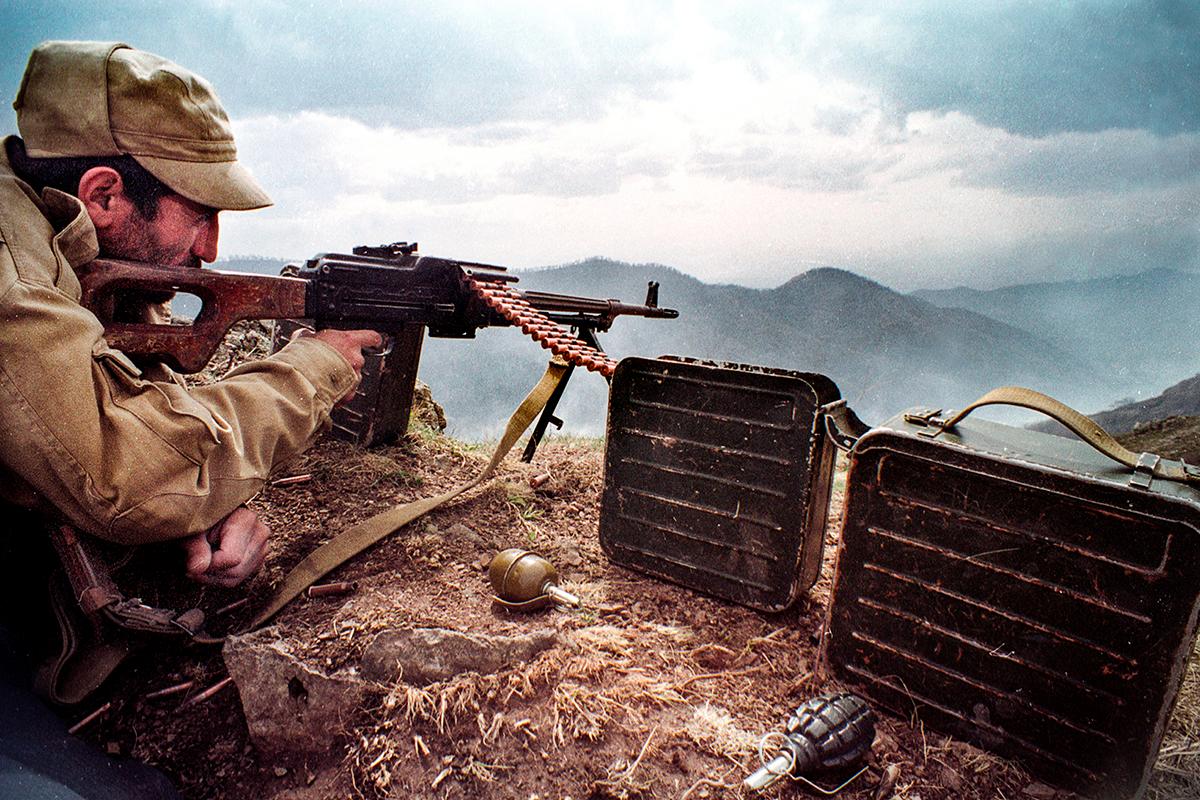
Armenian soldier aims at the Azerbaijani soldiers at the positions near the village of Khtsaberd (Azerbaijani name: Chaylakkala), April 1993
By the beginning of the war, the Azerbaijani armed forces significantly outnumbered the Armenian and Karabakh units, both in terms of numbers and technical equipment. At the same time, Ukrainian nationalists, Afghan mujahideen, and fighters from the Muslim republics of the former Soviet Union and the Middle East fought against Armenians on the Azerbaijani side. Among the latter were the well-known Chechen terrorists Salman Raduyev and Shamil Basayev, the Arab mercenary and field commander Khattab.
Numerous volunteers from the international Armenian diaspora have sided with Armenia. Some of them came from the Middle East. In addition, the Nagorno-Karabakh forces were supported by representatives of other unrecognized republics - Abkhazia, Transnistria, and South Ossetia.
A tough nut to crack
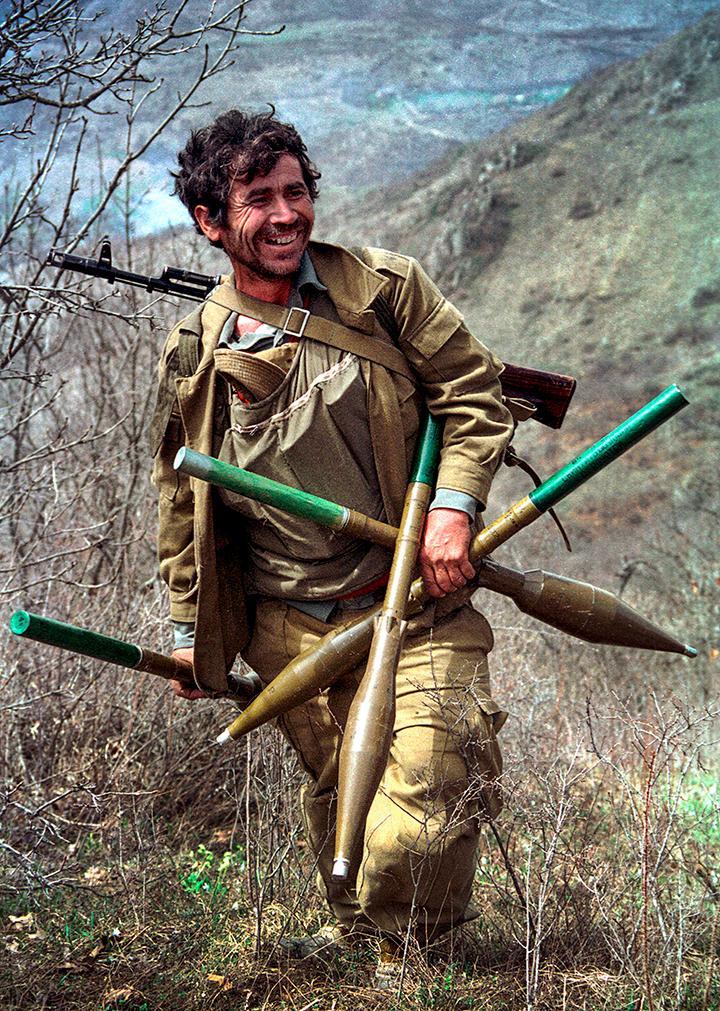
Armenian soldier near the village of Khtsaberd (Azerbaijani name: Chaylakkala) in Hadrut region of Nagorno-Karabakh, April 1993
The capture of Shusha by Armenian troops was the turning point of the 1992-1994 war. Built around a fortress erected on a two-three square kilometer plateau, it became an impregnable regional outpost. Its possession was largely decisive in determining the outcome of the ensuing confrontation.
The battles for the city ended on May 9, 1992. It took the Armenian military around 24 hours to assault the city; many people who later enjoyed prominent political careers, in particular, Robert Kocharyan, the future president of NKR and later of Armenia, and Samvel Babayan, the future NKR Defence Minister, took part in the assault.
The Azerbaijani soldiers abandoned their armored vehicles and missile launchers in the city, where they lost 150-200 people. The Armenian side lost about fifty people.
Losses of the parties
Despite Baku's numerical and technical superiority, the military luck in the Karabakh conflict turned out to be on the side of Yerevan and Stepanakert. No one has reliably confirmed the general data on losses, but according to the most realistic estimates, they amounted to 7-8 thousand killed on the Armenian side and 15-18 thousand on the Azerbaijani side.
During the armed conflict, Armenia acknowledged the loss of 52 T-72 tanks, 54 infantry fighting vehicles, 40 armored personnel carriers, 6 guns, and mortars. Azerbaijan, according to unofficial data, lost 186 tanks (T-72 and T-55), 111 infantry fighting vehicles, 8 armored personnel carriers, 7 self-propelled artillery units, 47 guns, and mortars, at least 7 helicopters, and about 11 aircraft.
Humanitarian disaster
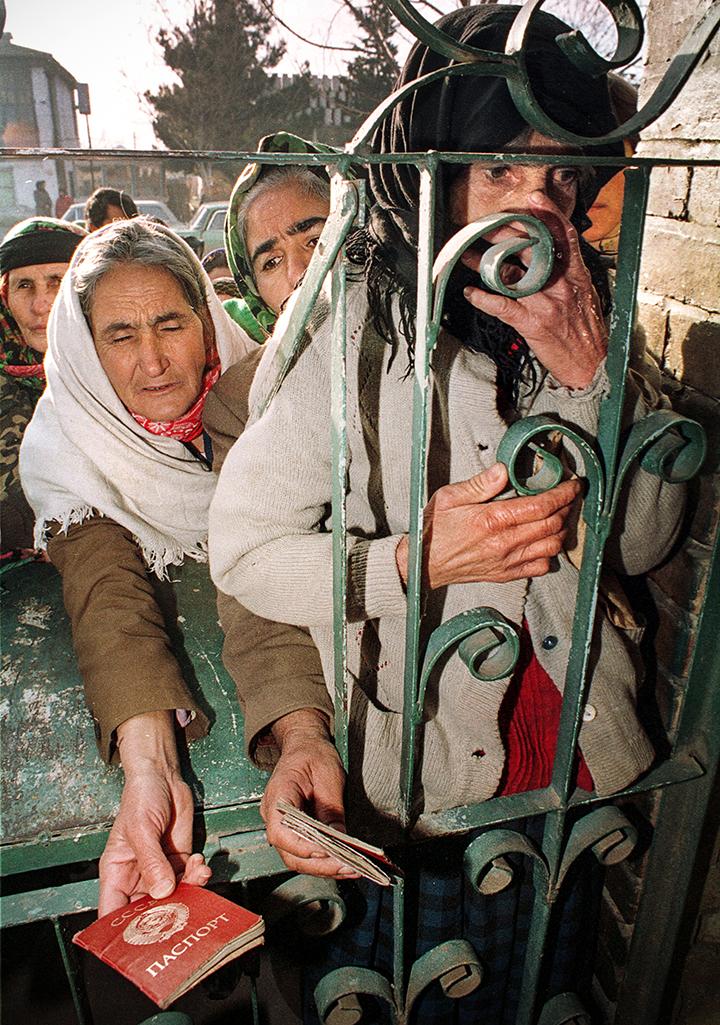
Azerbaijani refugees from Karabakh receive free bread in Imishli, 250 km away from Baku, February 1994
The war in Nagorno-Karabakh took a heavy toll on civilians. As a result of operations from the Azerbaijani and Armenian sides, hundreds of thousands of people from Karabakh villages were forced to leave their homes. Losses of the Armenian civil population as a result of shootings and bombardments in Nagorno-Karabakh amounted to more than a thousand people. There is no information about the killed Azerbaijanis. Refugees and displaced persons from both sides were more than a million people.
In the dark sky
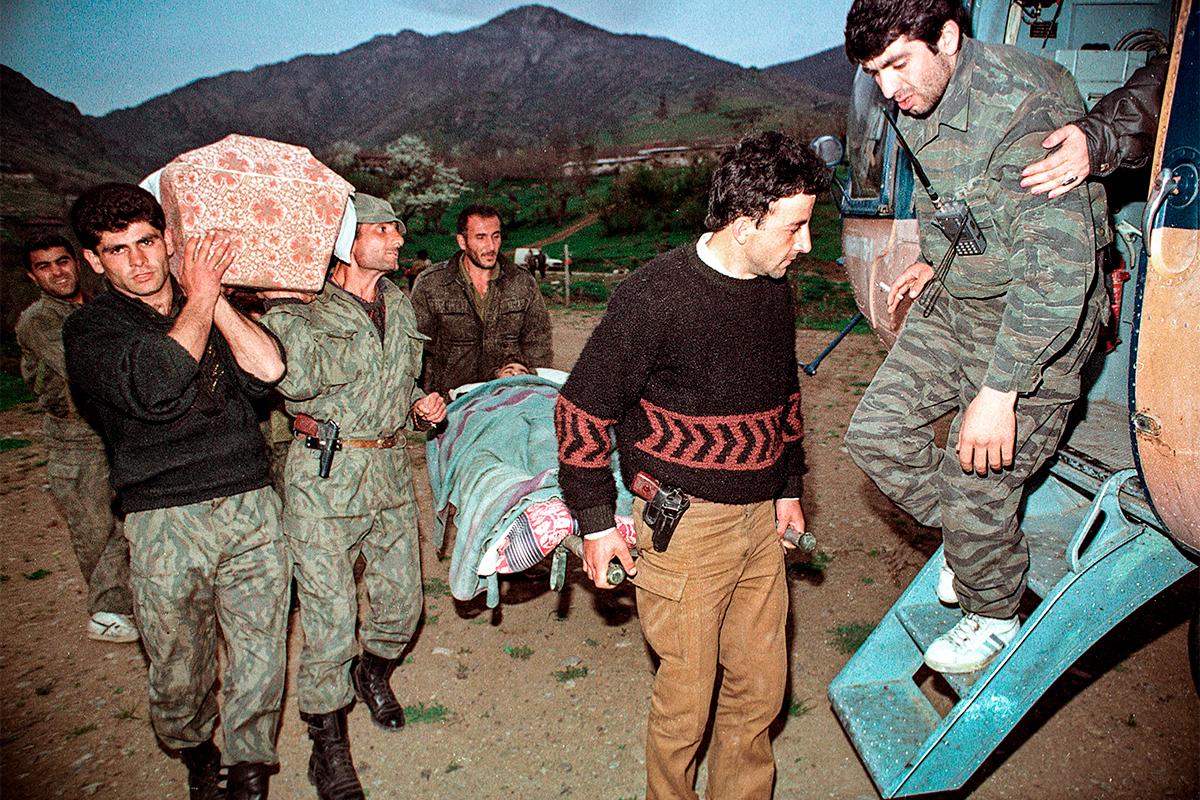
Armenian soldiers load bodies of killed and wounded soldiers on board a helicopter near the village of Hin Tagher (Azerbaijani name: Kohne Taghlar), Hadrut region, April 1993
Non-combatant aircraft also often became victims of shells. Thus, on 20 November 1991, even before the full-scale hostilities started, near the village of Qarakend in Nagorno-Karabakh, the Armenian military shot down a Mi-8 helicopter of USSR Interior Ministry troops, carrying high-ranking officials of the Azerbaijan SSR and observers from the RSFSR and Kazakh SSR.
On 28 January 1992, the Armenian military shot down an Azerbaijani civilian Mi-8 helicopter flying to Shusha. Several dozens of victims died in the crash. On 3 March of the same year, a Russian Mi-26 military transport helicopter carrying almost 50 women and children to Yerevan was shot down near the village of Gulistan. As a result, 16 people were killed.
Fragile peace

View of the burned-out city of Lachin, June 1994
As a result of the war, Nagorno-Karabakh gained de facto independence from Azerbaijan. In addition, Armenian units formed a security belt around Nagorno-Karabakh, adding fully or partially seven neighboring districts of the former Azerbaijani SSR: Kalbajar, Lachin, Gubadli, Jabrayil, Zangilan, Aghdam, Fuzuli. Together with the territory of Nagorno Karabakh itself, it is about 19 thousand square kilometers.
In May 1994, the trilateral ceasefire protocol was signed in Bishkek, inked by the Minister of Defence of Azerbaijan Mammadrafi Mammadov, the Minister of Defence of Armenia Serzh Sargsyan (the future president), and the Minister of Defence of the unrecognized Nagorno-Karabakh Republic Samvel Babayan.
That was the beginning of the negotiation process, which is still underway today under the auspices of the OSCE Minsk Group with the participation of Russia, France, and the United States.
On the verge

Azerbaijani women at the tomb of soldiers killed in Karabakh. Baku, February 1994
Meetings and negotiations, including those under the auspices of the OSCE Minsk Group, which had been going on ever since had yielded no results. The closest breakthrough came in 2001, when Azerbaijani President Heydar Aliyev and Armenian President Robert Kocharyan met in Key West, USA, to sign a peace agreement. But the signing fell through at the last moment.








